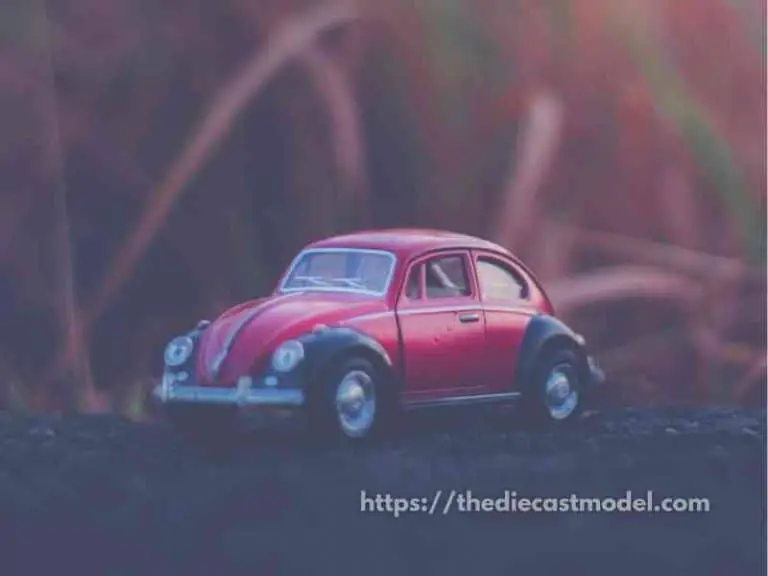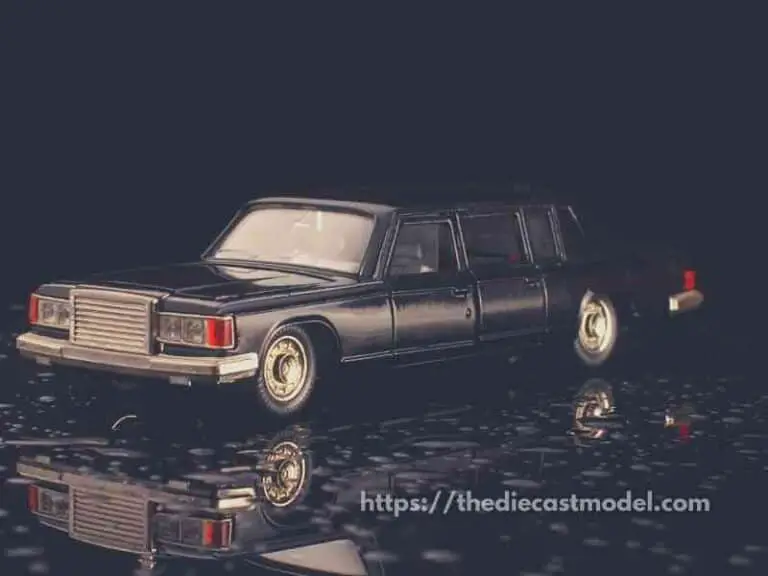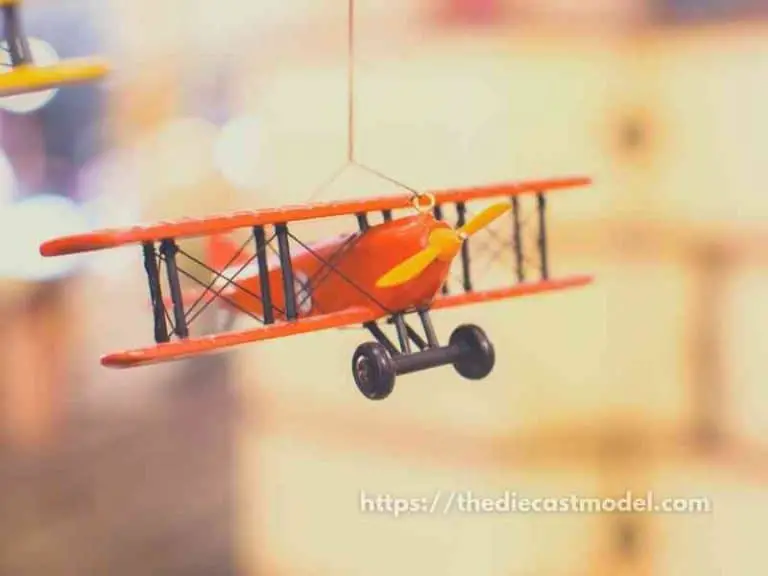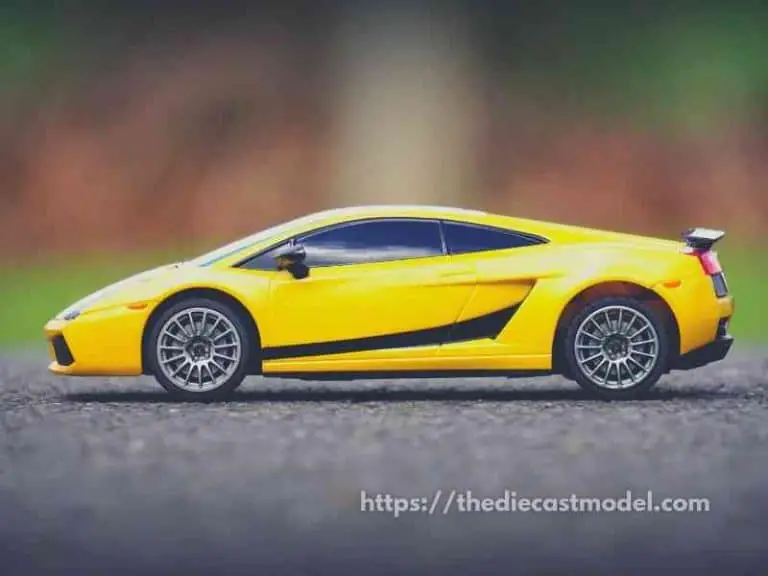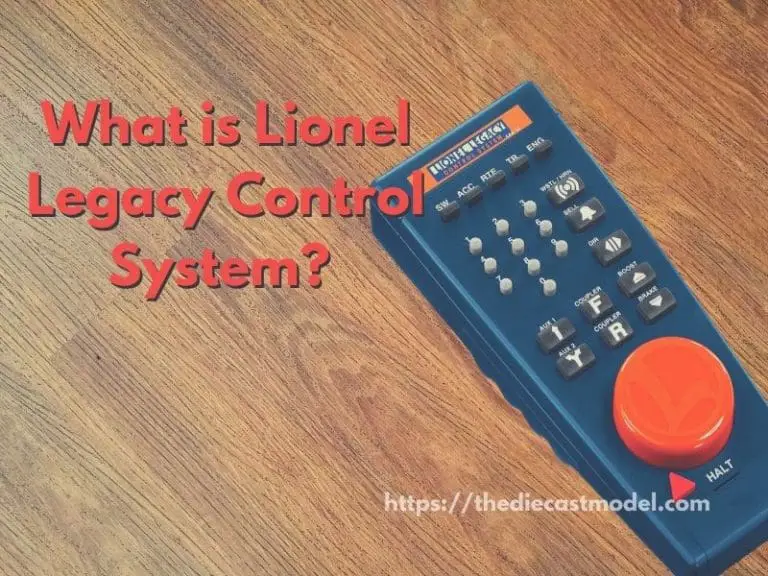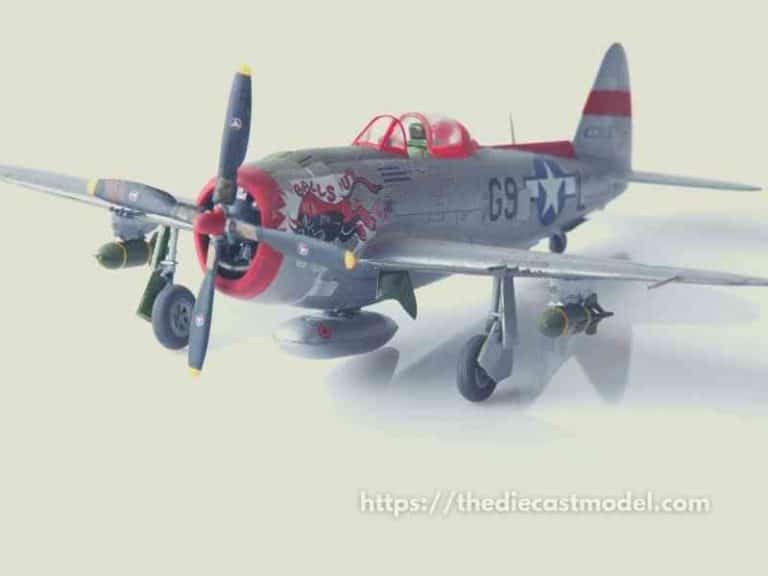Tamiya: Everything You Need To Know
Tamiya joined the model automobile industry in 1948 with a scale wooden boat model unit. From that point forward, Tamiya has been endeavoring to bring to the table a product that can genuinely be designated “First in Quality throughout the Planet.”
Tamiya was established in 1946 in Shizuoka, Japan. However, the company started its business as a sawmill rather than model kits that are known today. They made their first model in 1948, which is a wooden boat model. Because of its success, Tamiya closed their sawmill and went all-in on producing plastic kits in 1960.
This blog post will talk about Tamiya. Their brief history and where they’re made.
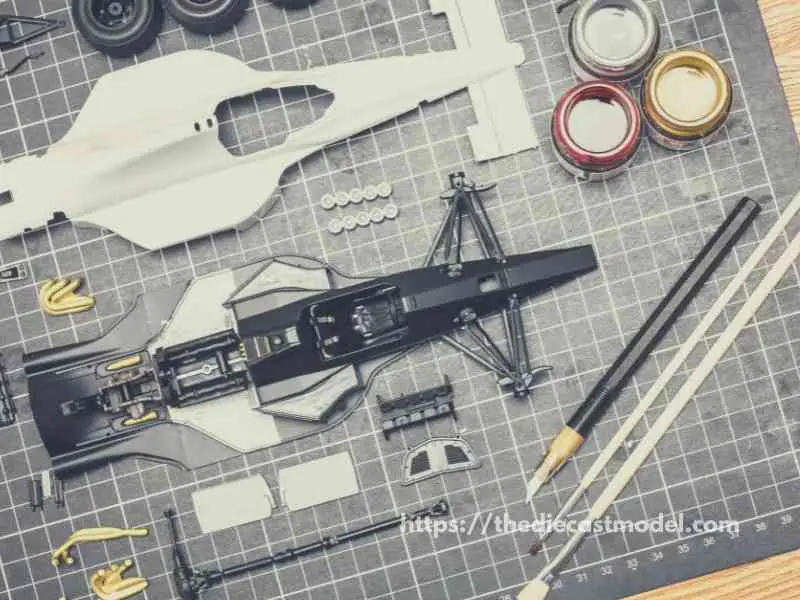
When Was Tamiya Made?
Tamiya was made or established in 1946 in Shizuoka, Japan, by Yoshio Tamiya. The company started as a sawmill before creating wooden models in 1948. Tamiya saw an opportunity in the plastic model industry and moved their business to model kits in 1960.
Tamiya ventured into the modeling business in 1948 with a scale wooden ship model kit.
Since then, Tamiya has been striving to offer merchandise that can indeed be called “First in Quality Around the World.”
Because of their success on model kits, the sawmill shut in 1953, when Tamiya turned into a devoted producer of models, moving into plastic units in 1960
In 1976, Tamiya entered the Radio-Controlled market with their first RC model, the Porsche 934, a dashing rendition of the 911.
Fast forward to now, Tamiya is not only known as one of the best brands when it comes to model kits, but they also offer numerous products in the model building process.
This includes paints, primer, brush, and many more things related to toy modeling.
Where Are Tamiya Models Made
Tamiya models are made in Japan, the Philippines, and China. Tamiya has now focused its manufacturing process in the Philippines because it offers cheaper labor costs than producing models in Japan. Some model parts are also outsourced in China for the same reasons.
As of now, over a portion of Tamiya’s items are fabricated in the Philippines.
While some of their products are made in Japan and China.
In the Philippines, there are two other areas where Tamiya produces its products, and that is inside the Mactan Airbase in Lapu-Lapu City, Cebu, and Antipolo City.
Tamiya, as well as other brand manufacturers, produces its model units in China.
Are Tamiya Packs Made in Japan?
Tamiya units are made in Japan, the Philippines, and China.
Tamiya Consolidated is a Japanese producer of plastic model packs, radio-controlled vehicles, battery and sunlight-based fueled instructive models, boat models, acrylic and finish model paints, and different displaying devices and supplies.
Tamiya is one of the leading producers of plastic model units situated in Shizuoka.
Tamiya has been fabricating RC vehicles starting around 1976.
Albeit the vast majority of its RC vehicles are conveyed as get-together units, it likewise has RTR models like the XB series.
Are Tamiya Packs Made in China?
There are Tamiya packs made in China. However, Tamiya’s main manufacturing plant is in the Philippines, particularly Antipolo City and Cebu City. Some of their models are still made in Japan, especially if the models require meticulous work.
About Tamiya Organization
Tamiya Corporation is a Japanese producer of plastic model packs, radio-controlled vehicles, battery, and detail-oriented fueled instructive models.
They also offer boat models, acrylic and finish model paints, and different displaying apparatuses and supplies.
Yoshio Tamiya established the organization in Shizuoka, Japan, in 1946.
Tamiya delivered all of their products from plans which had the idea of being “straightforward and fabricate, in any event, for amateurs.”
That’s why Tamiya is known as one of the best in giving detailed instructions along with their model kits.
Tamiya also has levels in them, from level 1 being the easiest and level 5 being the hardest.
I talked more about this in another blog post. You may find that blog post here: Are Tamiya Models Hard to Build?
Tamiya has acquired a good reputation among modelers in delivering models of remarkable quality and exact scale detail.
Its way of thinking is reflected straightforwardly in the organization’s maxim.
“First in Quality throughout the Planet.”
Tamiya Inc.
Tamiya has additionally been granted the Modell des Jahres (Model of the Year) grant, facilitated by the German magazine ModellFan.
Tamiya in the 1960s
At the start of joining the model kit industry, Tamiya used to rent metal molds from other companies; however, this caused frequent delays and hazy estimates, which prompted inconvenience.
Then, at that point, Tamiya explored how to metal-shape molds into the organization and, in 1964, began their Metal Molds division.
Note: Metal-shaped molds are essential since they inject plastics into these molds to make their model kits.
That’s why delays in renting molds caused too much inconvenience, especially for a plastic model company.
Beginning in 1966, they moved various skilled workers to form an assembling plant.
They gradually acquired the skill and came to make molds for Tamiya.
Today, computer-aided design has additionally been brought into the cycle.
Tamiya was known for their amazingly high precision on their molds, which has been reflected in their products.
But that didn’t end Tamiya’s problem with their manufacturing process.
When Tamiya fabricated plastic models utilizing mold specialists’ abilities and careful planning, they still outsource detailed bolts.
However, due to outsourcing, they also had a problem with quality.
That’s why Tamiya also addressed bolts, providing more precision.
What does precision have to do with Tamiya’s models? Precision is how identical the two models are. Your model should look exactly the same as my model if you have the same one.
If I have a Tamiya Ford Mustang GT4, your GT4 should have the exact same look.
And to make the exact same look without any minor defects requires intense precision.
Due to all of this meticulous attention to detail, Tamiya was able to compete with quality worldwide.
Tamiya in the 1970s
Tamiya entered the RC market in the 1970s
In 1976, Tamiya entered the RC market with their first RC model, the Porsche 934 Super RSR.
Due to their reputation in providing high-quality models, their RC model has also been a success.
Tamiya in the Modern Era
Today, Tamiya’s RC model has included:
- Countach Rivalry Exceptional, Super Champ
- Portage F-150 Officer, Toyota Hilux 4×4
- Chevrolet Bursting Overcoat
- Hilux 4×4 High-lift, Mountain climber
- Passage F-350 High-lift
- Can-Am Lola Dashing Expert Mk.1
- Subaru Whelp
- Lancia Rally
- Grasshopper
- Strong Frog
- Wild One
- Hornet
- Bird of prey
- Superstar
- Boomerang
- Quick Assault Vehicle
- Desert Gator
- Sand Snake
- Avante
- Avante 2001
- Top Power
- Dyna Tempest
- Dim Effect
- Sharp Falcon
- Avante Mk. II
However, it doesn’t end there because they also offered:
- Twin Detonator
- Wild Knife
- Twofold Burst
- Blackfoot Xtreme
- Hunk Buster
- TXT1
- Tamtech Series
- Land Smasher
- TNX (Tamiya)
- TNX 5.2R
- Nitrage 5.2
- Fat cat
- Fox
- Beast Scarab
- Celica
- Porsche 959 Paris-Dakar Rally
Presently Tamiya is offering more than 3000 different items, made with accuracy on static models, and radio control vehicles.
This all started with a wooden boat model.
These particular items are sold in Japan and traded in vast amounts to the US, Europe, South East Asia, and numerous different areas of the planet.
The norm of greatness accomplished by Tamiya is viewed as among the exceptionally best in the realm of model enthusiast.

“Only the things I love”
thediecastmodel.com is reader-supported. When you buy through links on the site, I earn an affiliate commission.
So, here are the things I love when taking care of my Diecast Models.
Cleaning the Models
The first we are going to talk about is cleaning the models.
Removing Dust
- Air Brush – For me, this is the best since it not just removes dust but you can use it in painting/clear coating.
- Air Duster – This is a good alternative to Airbrush
- Normal Brush – If you are short on budget, you can use a normal brush. However, make sure that the brush has soft bristles because there are some hard brushes than can cause scratches. That’s why I recommended a good brush that can do the job properly.
Cleaning and Shining Hacks
Well, here are some of my cleaning hacks for removing scratches, oxidation, and so much more.
- Removing Decal Adhesive – Use Goo Gone on those hard-to-remove decal adhesives. It works fast and works like charm!
- Waxing and Polishing – Here is something a lot of people don’t know. Waxing protects the clear coat and paint while polishing shines the model. Instead of buying it separately, use a 2 in 1 to save money. Get this instead.
- Beginner Wax – The wax I recommended earlier is good and provides the best results based on my experience. But a beginner might have a problem especially if they’re not good at applying wax. Solid wax reaching hard to reach surface can be hard to remove. You have two choices here. One is to use a qtips to reach those surfaces, another is to use a liquid wax I recommended.
- Cleaning Wheels, Rubber, Plastic – Do not forget that rubber and plastic surface are quite different, especially in the cleaning process. Just wiping it down won’t do the job. That’s why I use Meguiar’s Vinyl and Rubber Cleaner and Conditioner. Works like charm!
- Make the Wheels Shine! – Making our models look good won’t be complete without tiny details such as shiny wheels! Do not forget this because however small this is, the difference can be as big as night and day.
- Remove Scratches Easily – Tiny scratches are not the end for your model. Here is a simple trick I’ve been using to make my models look scratch-free even without repainting. Use T-Cut.
Painting the Models
Painting Tools
Make sure when you paint models, have these ready.
- Tape – A tape is important if you are painting a straight line. Furthermore, it will prevent your paint to scatter on other parts. I recommend Tamiya Tape since it is really made for models. Furthermore, they stick really well preventing paint splatters.
- Brush (Beginner) – Find a good set of brushes to paint your models. Of course, you can opt for an airbrush but it’s quite expensive.
- Airbrush (Intermediate/Expert) – This will yield a significantly better result than an ordinary brush because you can easily spray the paint evenly. I recommend this if you know what you’re doing.
- Stand(Optional) – Stands are good because it can be hard to manually hold the models while painting. It is optional but in my opinion, the price is well worth it for the comfort it gives.
- Drop Cloths – Drop Cloths will protect your surroundings from the paint.
- Primer – The most common beginner mistake I see is painting models without any Primer. A primer will prevent imperfections such as bubbles or paint not sticking to your models. It is a small price to pay for quality results.
- Clear Coat – A clear coat will protect the paint of your models. This will make the paint last longer. Also, it is the one responsible for making your models shine.
Paints
Of course, you can’t do painting properly without paint. So here are the ones I recommend.
- Acrylic Paint – Good for beginners because it dries quickly. However, it doesn’t produce results as good as enamel paint.
- Enamel Paint – Provides a good quality finish and longer-lasting paint. However, it takes longer to dry and requires expertise to use.
Model Maintenance
Model Storage
- Simple Wood Cabinet – While it doesn’t let you display your models, wooden cabinets are good storage for these models. For one, they are not heat conductors which means that the temperature inside will remain constant and remain cool. Furthermore, they prevent light from reaching the models which can cause oxidation.
- Clear Cabinet with Lock – If you want to display your models, then I recommend this. It closes so dust won’t easily get to your models. I also recommend you don’t put more than 1 model in each compartment since metals are good conductors of heat.
Model Photography
So you want to show off your models to others? Well, I got you covered.
Here is my beginner-friendly model photography tutorial that teaches everything from taking pictures to the editing process.
You will also see me doing hands-on photography in that tutorial.
Here is the link: How to Take Pictures of a Diecast Model or Model Kit | Helpful Illustrated and Video Guide

